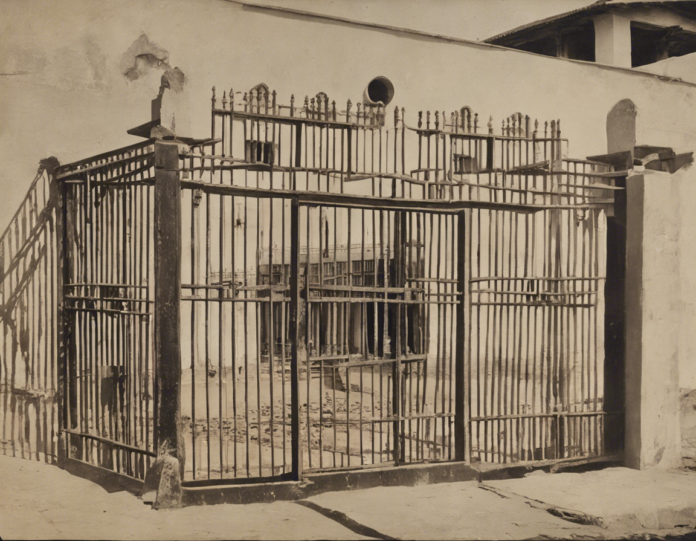Introduction
The history of Kala Pani Jail is sordid and tragic, embodying the darkest aspects of India’s colonial past. Situated in the remote Andaman Islands, this infamous penal colony served as a punishment destination for Indian freedom fighters and political prisoners during British rule. The mere mention of Kala Pani Jail evokes feelings of dread and despair, symbolizing the inhumane treatment meted out to those who dared to challenge British authority. In this article, we delve into the history of Kala Pani Jail, exploring its origins, significance, and the harrowing experiences of inmates who suffered within its walls.
Origins of Kala Pani Jail
The establishment of Kala Pani Jail dates back to the mid-19th century when the British colonial administration identified the Andaman Islands as an ideal location to incarcerate political prisoners and hardened criminals. The isolated and inaccessible nature of the islands, surrounded by treacherous seas infested with sharks, made escape virtually impossible. Construction of the jail began in 1858, following the Indian Rebellion of 1857, as a means to quell dissent and suppress any resistance to British rule.
Life Inside Kala Pani Jail
Inmates of Kala Pani Jail endured unimaginable hardships and cruelty at the hands of their British captors. The harsh conditions, deplorable living quarters, and brutal treatment inflicted upon prisoners earned the jail its reputation as a living hell on earth. Forced labor was a common practice, with inmates subjected to backbreaking work in the sweltering tropical heat. Many prisoners perished due to disease, malnutrition, and physical exhaustion, their bodies buried in unmarked graves within the confines of the jail.
Significance in the Indian Independence Movement
Kala Pani Jail played a significant role in the Indian independence movement, serving as a stark reminder of the sacrifices made by freedom fighters in their struggle against colonial oppression. Prominent leaders such as Vinayak Damodar Savarkar, who was imprisoned in Kala Pani for his role in the struggle for independence, endured years of solitary confinement and mistreatment at the hands of the British authorities. The stories of resilience and defiance exhibited by inmates of Kala Pani Jail became emblematic of the indomitable spirit of the Indian people in their quest for freedom.
Closure and Legacy
Following India’s independence in 1947, Kala Pani Jail ceased to function as a penal colony, its dark legacy etched in the annals of history as a testament to the cruelty of colonial rule. The jail now stands as a national memorial, commemorating the sacrifices of those who suffered within its walls in the pursuit of freedom and justice. Visitors to the Andaman Islands can tour the remnants of Kala Pani Jail, bearing witness to the horrors endured by countless individuals who languished in captivity under the British colonial regime.
FAQs
1. What does “Kala Pani” mean?
“Kala Pani” translates to “black water” in Hindi, symbolizing the treacherous journey undertaken by prisoners to reach the Andaman Islands and the darkness of their confinement within the jail.
2. Who were the inmates of Kala Pani Jail?
Inmates of Kala Pani Jail included Indian freedom fighters, political dissidents, and criminals sent to the Andaman Islands as a form of punishment by the British colonial authorities.
3. What was the punishment like in Kala Pani Jail?
Punishments in Kala Pani Jail were severe and included solitary confinement, forced labor, beatings, and malnourishment, leading to high mortality rates among inmates.
4. Are there any famous personalities associated with Kala Pani Jail?
Prominent figures such as Vinayak Damodar Savarkar, Batukeshwar Dutt, and Fazl-e-Haq Khairabadi were among the notable inmates who endured imprisonment in Kala Pani Jail.
5. How did Kala Pani Jail contribute to the Indian independence movement?
The suffering and sacrifices of inmates in Kala Pani Jail galvanized support for the Indian independence movement, highlighting the brutality of British colonial rule and inspiring greater resistance against oppression.
6. Is Kala Pani Jail open to visitors today?
Yes, Kala Pani Jail has been preserved as a national memorial and is open to visitors who wish to learn about its history and pay homage to the individuals who suffered within its walls.
In conclusion, the history of Kala Pani Jail serves as a stark reminder of the atrocities committed under colonial rule and the resilience of those who fought against oppression. The legacy of Kala Pani Jail endures as a testament to the enduring quest for freedom and justice, immortalizing the sacrifices of those who suffered within its confines.
